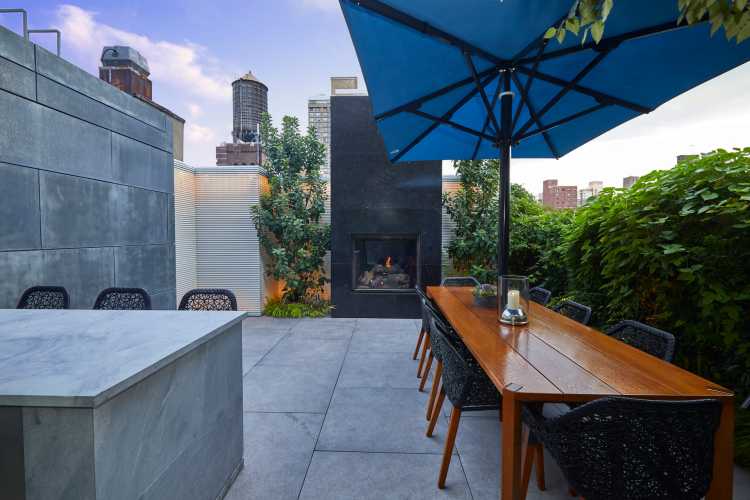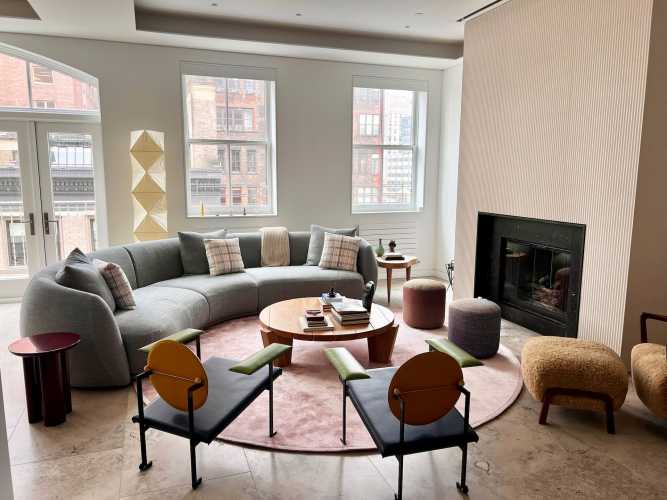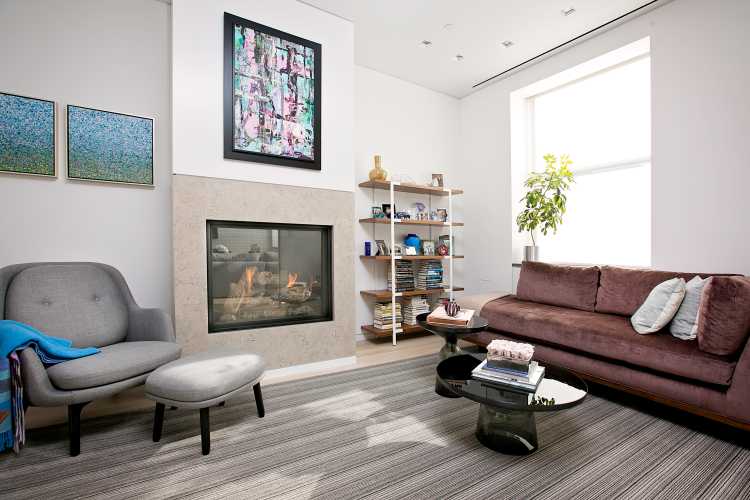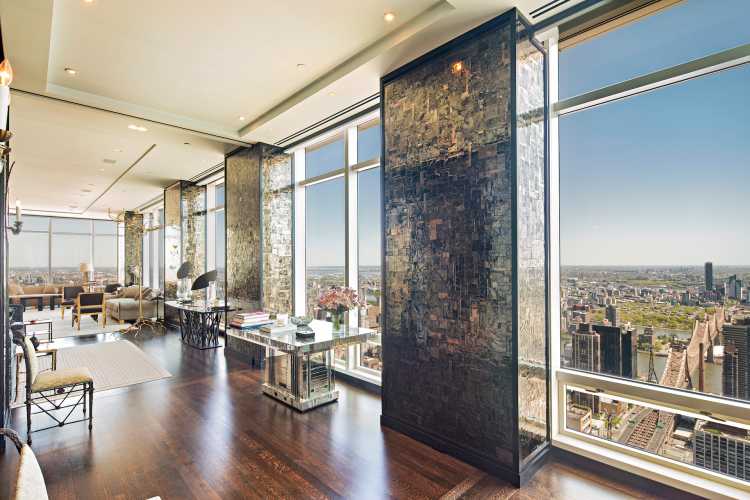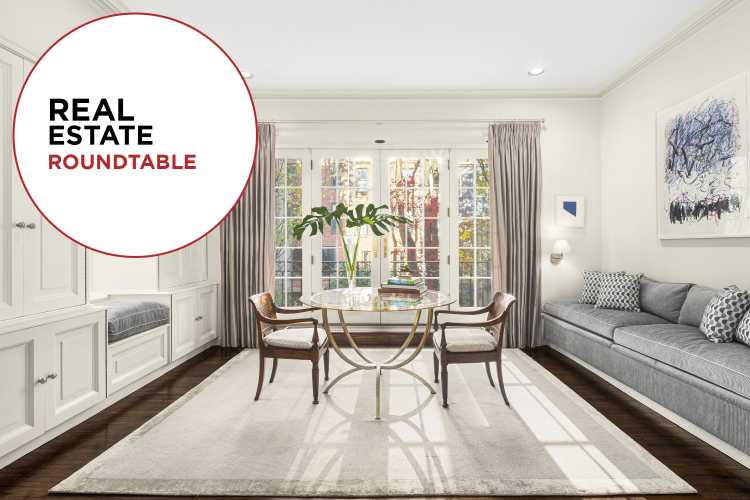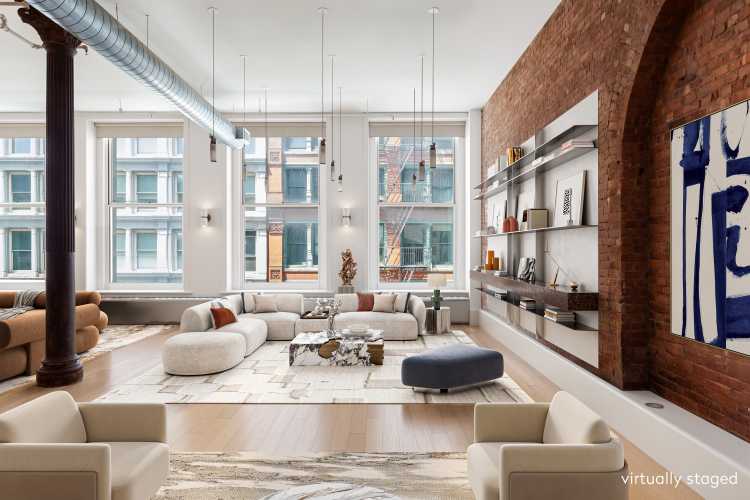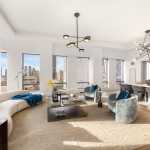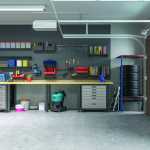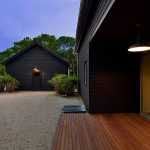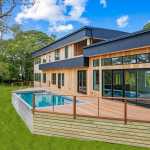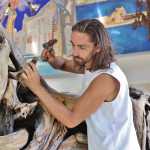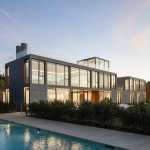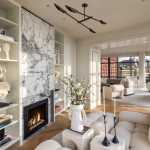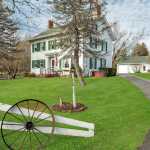It’s a challenge trying to sum up David Nosanchuk’s 25-year career. No matter what you say about the artist, designer, architect and master craftsman, you always feel like you’re leaving something out.
Since he moved to New York City in the late 1990s after graduating first from the University of Michigan and then from the Southern California Institute of Architecture, Nosanchuk has designed and created furniture, carpeting, wallpaper, lighting and complete home interiors and outdoor spaces.
His work – often groundbreaking and audacious – is part of the permanent collections of the Cooper Hewitt Smithsonian Design Museum in New York City and Lés Arts Décoratifs in Paris, and it has been exhibited widely in museums, design centers, galleries and cultural institutions in the United States and abroad.
One of Nosanchuk’s more high-profile creations is known simply as “Louie.” It’s a hanging lamp created from a 3D scan of the Bayard Condict Building on Bleecker Street in NoHo, which was designed by renowned modern architect Louis Sullivan. “Louie” was originally shown at the New Craft exhibit at the Triennale di Milano museum and later commissioned as a series of 12 light sculptures that added a touch of modernist illumination to the Italian Pavilion at the 2016 Olympic Games in Rio. An early incarnation of the “Louie” design is currently hanging from the living room ceiling of Nosanchuk’s Upper West Side apartment, which makes for an arresting sight when visitors first walk in the door.

Nosanchuk’s current projects include a collaboration with U.S. and international museums to remake sculptures by Auguste Rodin and Francois Pompon as limited edition wax objects. (Think of the works as finely detailed candles that will probably never be burned, courtesy of two French masters and a dedicated American artisan.)
Continuing an artistic and spiritual kinship with a culture he originally discovered decades ago when he made his first piece of furniture, Nosanchuk is also working with the Shaker Museum in Upstate New York to recreate storage boxes and other household items from the museum’s collection. He uses colored resin to fabricate the elegantly simple Shaker designs from digital 3D scans of the original wooden objects.
Like his wax renderings of works by Rodin and Pompon, the Shaker boxes are a collection with one foot firmly in a bygone era and one foot firmly in the modern world. Or as Nosanchuk puts it, “It’s about using technology to reinvent the past.”
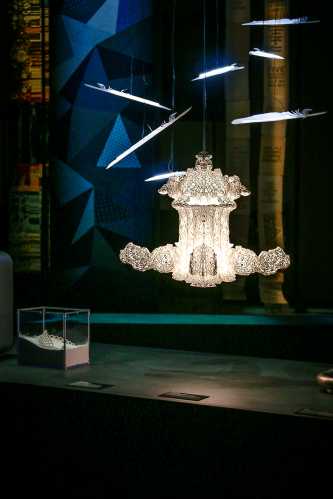
East End visitors and locals don’t have to travel very far to see a prime example of some of Nosanchuk’s most recent work. A hanging lamp from his acclaimed “Butterfly Asteroid” sculptural lighting series is currently on display at Jeff Lincoln Art + Design on North Sea Road in Southampton.
Nosanchuk also works regularly with international brands, creating designs for Alessi, Boyd, Ex Novo and Stark, among others. He is currently working on new commissions with international museums and galleries, as well as architects, designers and private clients.
Nosanchuk says that he has finally learned to embrace the idea of himself as the Swiss Army knife of the art and design world. In fact, given that he’s also an accomplished chef and was once a nationally ranked junior tennis player, it wouldn’t be unreasonable to also call him a Renaissance man.
So when a design client introduced Nosanchuk to her team as a “multi-hyphenate,” he had something of an epiphany.
“I’ve asked myself, am I an artist or an architect?’” he says. “But now I embrace the idea of being a multi-hyphenate, and I realize it’s a strength, not a weakness. I would say I’m a ‘thinker-maker.’
If I do an interior, for example, I understand the lighting, I understand where the furniture is going, I understand how the built-ins are made. Or if I’m creating a light fixture, I understand who’s making it, how it’s being made and what the technologies are.”
In addition to embracing his inner multi-hyphenate, Nosanchuk brings a fully realized philosophy to his art, regardless of the discipline he happens to be working in.
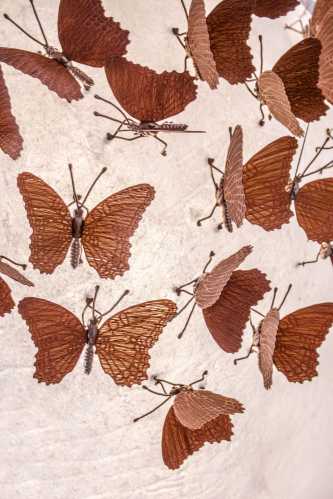
He says that most of his work is “based on this concept of recreating things from existing things, whether it’s nature or art or architecture, and creating relationships that didn’t exist before between the material and the original piece.”
Nosanchuk explains that his “Butterfly Asteroid” lighting series, for example, combines two very dissimilar forms that have more in common than they appear. He notes that while the butterfly is organic and the asteroid is inorganic, they share a very real connection in his artistic belief system.
“The asteroid and the butterfly are characterized by flight, and while the life history of these objects differ, their patterns of flight are both the result of a metamorphosis: the asteroid, the oldest remnant dislodged in the making of our solar system, and the butterfly from caterpillar to a fine armature engineered for levitation,” he writes on his website. “These subjects also have a known repeated journey in space and time, the butterfly with its annual migration and the asteroid with its predictable orbit.”
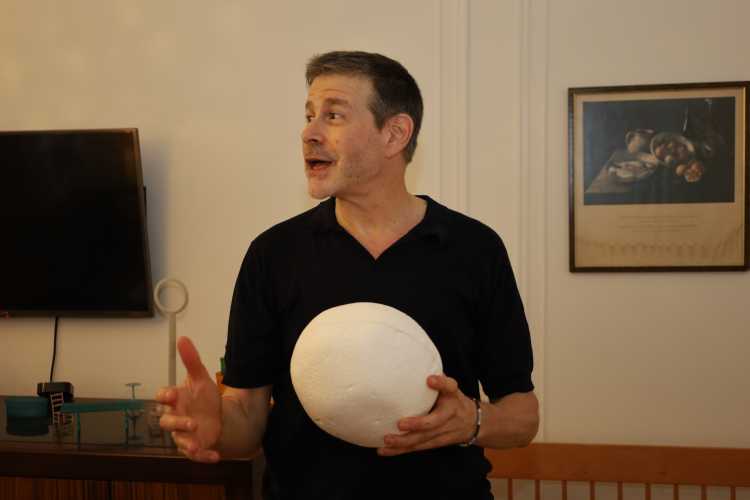
“When I started making connections beyond the work itself — when it wasn’t just an object to look at, but it had these memories or layers or history or attachments to it that people could take what they wanted from or delve into to whatever degree they wanted, that’s when the work got stronger,” he adds.
To watch Nosanchuk painstakingly affix his white bronze butterflies with laser-engraved holly veneer or mother of pearl wings to their fiberglass asteroid perch is to watch an artist who has found transcendence – an artist who has traveled, at least for a while, to that elusive place where virtually everyone who has ever tried to create something strives to go.
Nosanchuk also brings a unique sensibility to his architectural design work.
One of his most intriguing recent projects is a 1,000-square-foot, sixth-floor roof space in Manhattan’s NoMad neighborhood. Nosanchuk designed the interior space of the property as well, and it’s quite compelling in its own right. But there’s something about the choices he made for the roof space that crystallizes his architectural aesthetic.
Other than a quintessentially New York City view of the Chrysler Building in the middle distance, the space began as an empty canvas.
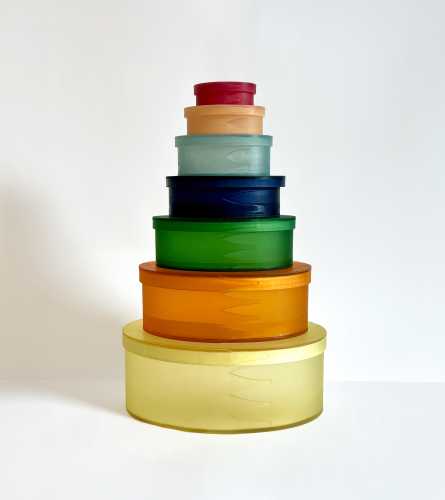
“We started with a blank roof – all the architecture was from a zero slate,” he explains. “It’s really more of a floating landscape in the sky than a roof terrace.”
The space’s amenities include an infinity pool and spa with an outdoor shower, a fireplace and a retractable awning over the bar. Luxe features aside, the roof is really about flow and a seamless marriage of materials – porcelain, granite, limestone, quartzite, zinc, powder-coated aluminum and teak all working together to form a cohesive and durable whole.
“A lot of outdoor spaces tend not to hold up well after a year or two in the elements, so I wanted to use materials that would withstand the test of time,” Nosanchuk says.
While Nosanchuk has only done a handful of architectural design projects, mostly in and around Manhattan, he says he is open to expanding his portfolio in that area.
“Sometimes the art projects are maybe a little more spiritual and personal,” he says, “But I do like people and I do like making spaces.”
Nosanchuk also accurately points out that he brings a bit more to the table than a typical creative, noting that, “There aren’t a lot of architectural or interior designers who also have their work in permanent museum collections.”
At some point, those who might be interested in commissioning work from David Nosanchuk – whether it’s to create a piece of art or design a space from scratch — will probably come to realize that working with a multi-hyphenate has its advantages.
This article appeared in the July 18, 2025, edition of Behind The Hedges in Dan’s Papers. To read the full digital edition, click here.
